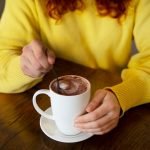
Chocolate is a beloved treat enjoyed by people of all ages around the world. Its rich and indulgent flavor makes it a go-to choice for satisfying sweet cravings. But have you ever wondered, does chocolate get moldy? In this article, we’ll delve into the world of chocolate, exploring its shelf life, storage tips, and whether mold can ever find its way into this delectable delight.
Understanding Chocolate Composition
Before we dive into the moldy mysteries of chocolate, let’s first understand what chocolate is made of. At its core, chocolate is composed of cocoa solids, cocoa butter, sugar, and, in the case of milk chocolate, milk solids. The combination of these ingredients creates the velvety texture and irresistible taste we all love.
The Shelf Life of Chocolate
Chocolate is known for its impressive shelf life, thanks in part to the low moisture content in cocoa solids and cocoa butter. This lack of moisture creates an inhospitable environment for mold growth. In fact, properly stored chocolate can last for a very long time, often well beyond its official “best by” date.
Factors Affecting Chocolate’s Shelf Life
Several factors can influence the longevity of your chocolate:
1. Temperature
Chocolate should be stored in a cool, dry place, ideally at a temperature between 60 and 70°F (15 to 21°C). High temperatures can cause chocolate to melt and potentially promote mold growth if moisture is introduced.
2. Humidity
Humidity is the enemy of chocolate. Moisture can cause chocolate to develop a grainy texture or even form sugar crystals on its surface. This is not mold but a sign of poor storage conditions.
3. Exposure to Light
Chocolate should be kept away from direct sunlight and artificial light sources, as exposure to light can lead to flavor changes, called “lightstruck” chocolate. Again, this is not mold but a quality issue.
Can Chocolate Really Get Moldy?
While chocolate’s low moisture content and composition make it a challenging environment for mold to thrive, it is not entirely immune to mold growth. If chocolate is exposed to excessive moisture or is stored in a humid environment, it can develop mold.
White Powdery Substance on Chocolate
Sometimes, you might find a white powdery substance on the surface of your chocolate. This can be mistaken for mold, but it’s often something called “chocolate bloom.” Chocolate bloom occurs when the cocoa butter in the chocolate rises to the surface and crystallizes. It can make the chocolate look unappetizing but is safe to eat.
Actual Mold on Chocolate
If you discover fuzzy, green, or other colored patches on your chocolate, this is a sign of mold growth. While it’s relatively rare, it can happen if chocolate is exposed to moisture for an extended period. In this case, it’s best to discard the affected chocolate to avoid any potential health risks.
Tips for Preventing Mold on Chocolate
To ensure your chocolate remains mold-free, here are some tips for proper storage:
1. Use Airtight Containers
Store chocolate in airtight containers to prevent exposure to moisture and humidity.
2. Keep It Cool
Maintain a cool and consistent storage temperature, away from heat sources.
3. Avoid Refrigeration
Refrigeration can cause condensation on the chocolate’s surface, potentially promoting mold growth. It’s best to store chocolate at a stable room temperature.
4. Consume It Promptly
Enjoy your chocolate within its recommended shelf life to minimize the risk of mold development.
Conclusion
So, does chocolate get moldy? While chocolate’s composition makes it resistant to mold growth, it’s not entirely invincible. Proper storage and handling are key to preserving the quality and safety of your chocolate treats. By following the tips mentioned above, you can continue to enjoy your favorite chocolates without worrying about the unwanted addition of mold.
FAQs (Frequently Asked Questions)
1. Can I still eat chocolate with chocolate bloom?
Yes, chocolate with bloom is safe to eat. It might not look as appealing, but it’s perfectly fine in terms of taste and safety.
2. How can I tell if the white substance on my chocolate is bloom or mold?
Bloom is typically powdery and uniform in appearance, while mold will have a fuzzy or irregular texture and often be green or other colors.
3. What should I do if I find mold on my chocolate?
It’s best to discard chocolate with mold to avoid potential health risks. Mold can produce mycotoxins, which can be harmful if ingested.
4. Can I store chocolate in the freezer?
While it’s not recommended for long-term storage, you can freeze chocolate to extend its shelf life. Just ensure it’s well-sealed to prevent moisture exposure.
5. Is dark chocolate less prone to mold than milk chocolate?
Dark chocolate is less prone to mold because it contains less sugar and moisture, creating a less favorable environment for mold growth. However, proper storage is essential for all types of chocolate.










